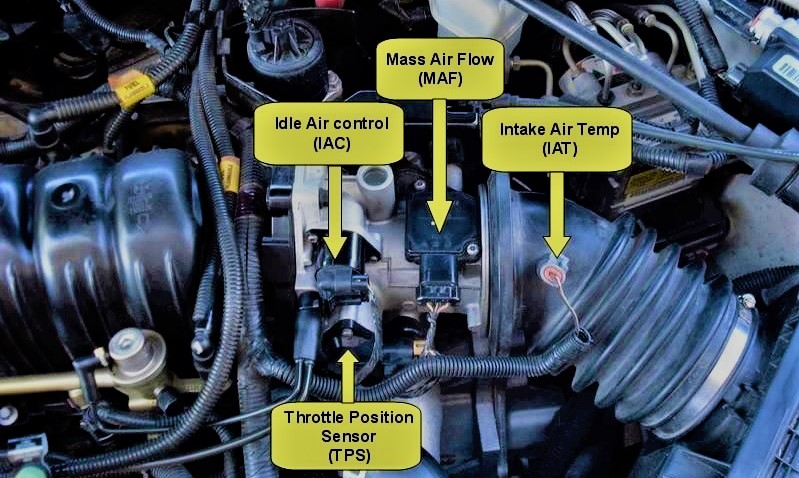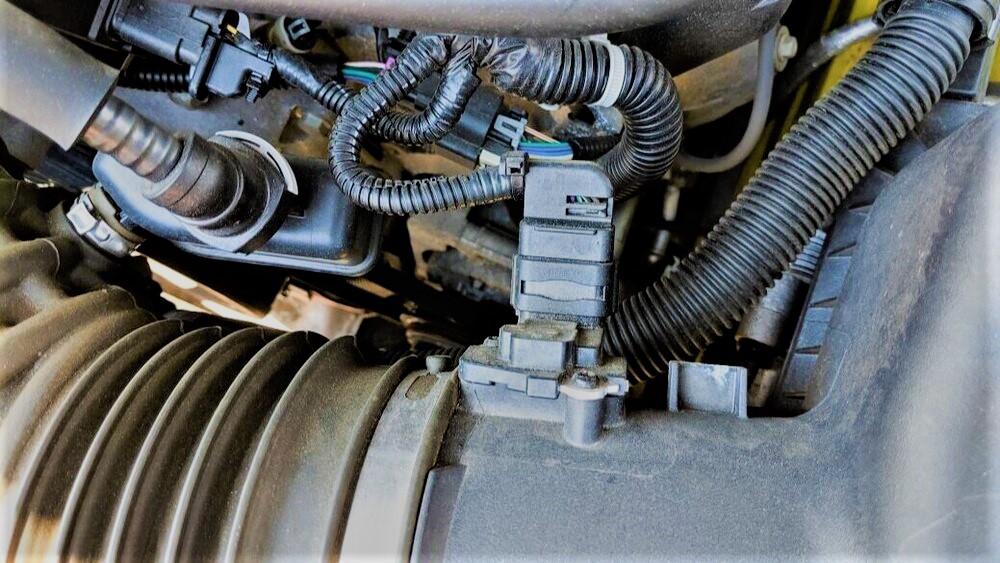Imagine yourself driving on a highway in your car when all of a sudden, the engine starts to splutter and misfire. What’s going on? It could be a problem with your Mass Airflow (MAF) sensor – the vital component that regulates the amount of air entering the engine for efficient combustion and optimal performance.
But fear not! Understanding MAF sensors isn’t rocket science. There are two types commonly used in various car models: wire-based sensors and film-based sensors. Hot-wire and hot-film sensors are both used to measure the airflow in the engine, and they work by heating a tiny wire or thin film element as air passes over it.
In this article, we will examine the most prevalent problems associated with MAF sensors and offer advice on how to diagnose and resolve them.
What is a MAF sensor & How does it work?

Replacing the Mass Airflow sensor without investigation can result in spending a considerable amount of money on a new sensor that may not resolve the issue.
Think of it as a traffic cop directing the flow of air to keep your engine running smoothly and efficiently. By detecting the volume of air entering your engine, the MAF sensor helps ensure that it’s getting the right amount of air for optimal combustion.
The wire/film is supplied around 0.5-5 volts of current by the ECU to keep the wire/film heated.
In short, When you press down on the gas pedal, air rushes through the Mass Airflow (MAF) sensor, either over a wire or film element, causing it to cool down. The greater the amount of air flowing through, the more cooling occurs.
The ECU (Engine Control Unit) then supplies a greater voltage to the MAF sensor, to cancel out the cooling effect.
Signs that your Mass Airflow Sensor has gone bad
Do you ever feel like your car isn’t performing as well as it used to? Experiencing rough idling, and engine stalling? If this sounds relatable, then there is a possibility that your Mass Airflow Sensor needs to be replaced.
An Engine malfunction light illuminating:
This light serves as an early warning sign that something is wrong with your car’s engine management system.
If you notice the check engine light is on, you should immediately have your vehicle diagnosed by an expert or visit our store & get yourself a self-diagnosing tool to check what’s up with your car.
DTC codes related to a faulty MAF sensor may include; P100, P101, P102, P103, and P0171.
Decreased Fuel Economy:
A faulty Mass airflow sensor can cause the ECU to supply an inaccurate amount of air & fuel to the engine. As a result, you may need to make more trips to the gas station than usual.
A decline in Engine Performance:
If you’ve noticed that your car’s performance has been declining, it might be due to a faulty Mass Airflow (MAF) sensor.
Steps to Troubleshoot your MAF:
Testing a MAF (Mass Air Flow) sensor is a relatively straightforward process, before you go ahead to buy a brand new sensor, consider doing these steps & then decide whether you need a new MAF sensor or not.
Check the MAF Sensor for Dirt or Debris:
Before performing any tests, check the MAF sensor for dirt or debris, as this can cause inaccurate readings. Be sure to follow the manufacturer’s instructions for the cleaning process.
Check the MAF Sensor Wiring and Connectors:
Ensure that the MAF sensor wiring and connectors are in good condition and properly connected. If there are any damaged wires or connectors, repair or replace them as necessary.
Connect The MAF sensor to a multimeter:
To diagnose a potential issue with your MAF sensor, connect a multimeter to the sensor terminals – one lead on the signal wire and the other on the ground wire.
Turn on the ignition (without starting the engine) and observe the voltage reading displayed on the multimeter. If the voltage falls outside of the specified range, it may indicate a faulty sensor that needs replacement.
By performing this simple diagnostic test, you can detect any potential problems with your MAF sensor and take the necessary steps to maintain optimal vehicle performance.
In general, the voltage range of a MAF sensor is typically between 0.5 to 5 volts.
Steps to Locate & Replace a bad MAF sensor:

The MAF sensor is typically located between the throttle body and the air filter. Symptoms of a bad MAF sensor include rough idling, decreased fuel efficiency, and hesitation during acceleration. Cleaning the sensor or replacing it may be necessary for a fix.
1. Disconnect the Battery
To prevent potential electrical problems, it is advisable to disconnect the battery before beginning any maintenance or repair work on your vehicle.
2. Disconnect the MAF Sensor Wiring
Gently disconnect the wiring harness that connects the MAF sensor to the vehicle’s electrical system. The wires are generally clipped to the sensor which can be easily removed by gently applying pressure.
3. Remove the MAF Sensor
Use a specialized MAF sensor removal tool, or carefully remove the sensor by hand. Be sure to avoid touching the sensor’s delicate components to prevent damage.
4. Connect the New MAF Sensor
Reconnect the wiring connector to the new MAF sensor, ensuring that it is fully seated and secure. Be sure to align the sensor correctly and tighten any fasteners or clamps as necessary.
Summary
Your vehicle is more than just a mode of transportation – it’s your trusty companion on the open road, your escape from the daily grind, and your faithful sidekick through life’s adventures. But even the best companions need a little TLC from time to time, and that’s where the MAF sensor comes in.
This small but mighty component plays a critical role in regulating the airflow to your engine, ensuring that it’s running smoothly and efficiently.
Without a well-maintained MAF sensor, your engine can become unstable, leading to issues like reduced fuel economy, stalling, and engine misfires. And let’s face it – nobody wants to deal with those headaches!
Popular inquiries
Q: How much does it cost to replace a mass airflow sensor?
The cost of a mass airflow sensor replacement can vary depending on the make and model of the vehicle and where you go for the repair.
Since most Toyota & Honda parts are cheap, hence parts for their vehicles also cost way less as compared to other car manufacturers.
It should cost no more than $100-150 for a MAF replacement including labor for your Honda/Toyota. The cost may go up slightly up to $300 for BMW or Mercedes.
Q: How long does it take to replace a bad mass airflow sensor?
Replacing the sensor hardly takes a few minutes. However, the diagnostic process to confirm that the sensor is the root cause of the problem can take longer and may involve additional testing.
The diagnosing part can also be made easy if you’ve got an OBD-II scanner, the scanner will straight away tell you if your car has any MAF sensor-related DTC codes.
